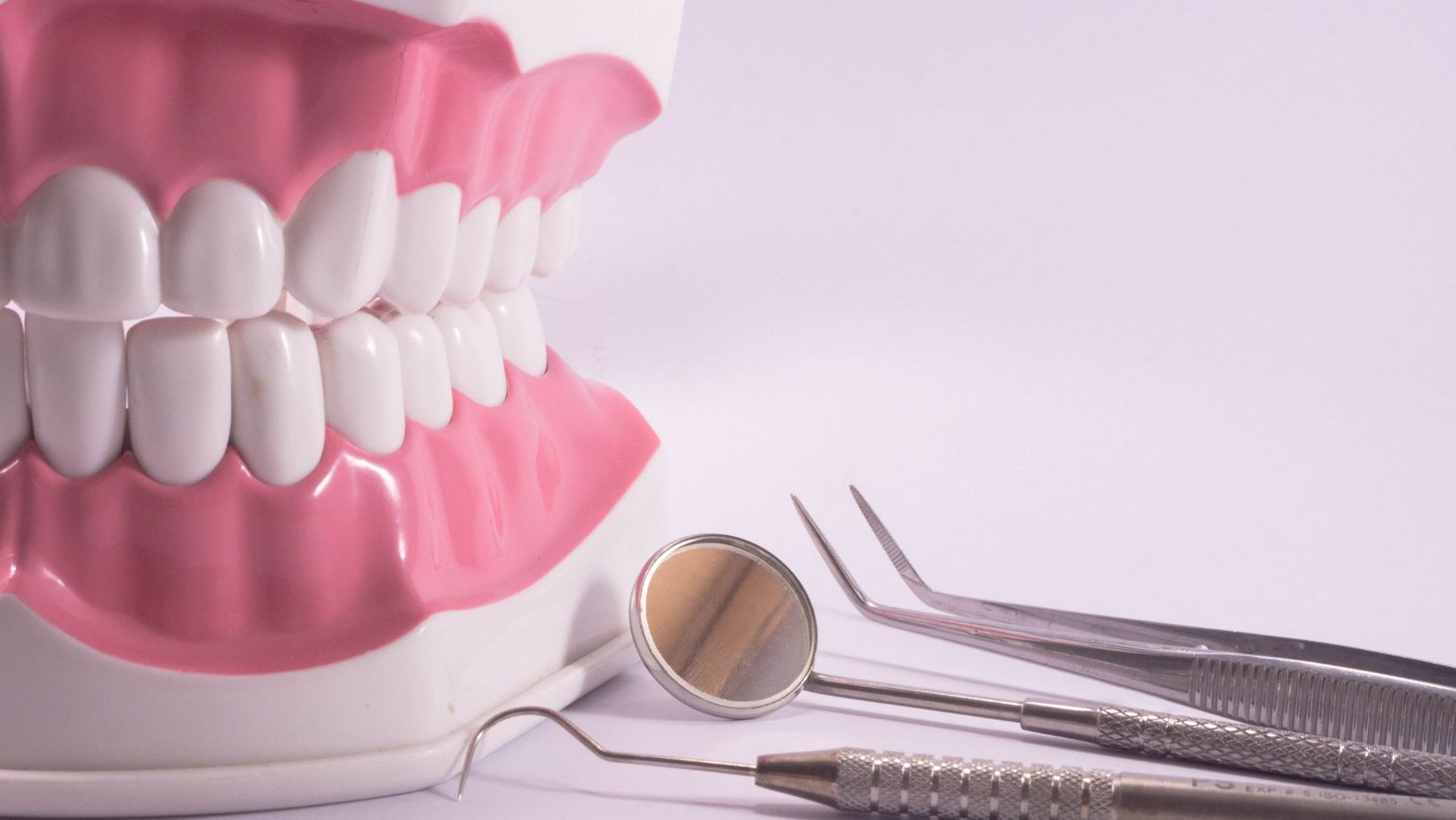
Navigating the world of dental prosthetics can be daunting, especially when it comes to understanding the costs involved. In Indonesia, many turn to their local community health centers, or puskesmas, for affordable dental care solutions. One such solution is the installation of a single artificial tooth, or Harga Pasang Gigi Palsu 1 Biji Di Puskesmas.
In this article, we’ll delve into the costs associated with this procedure at puskesmas, providing you with a clear understanding of what you can expect. We’ll also explore the factors that can influence these costs, helping you make an informed decision about your dental health. So, whether you’re considering this procedure or simply curious, read on to gain valuable insights.
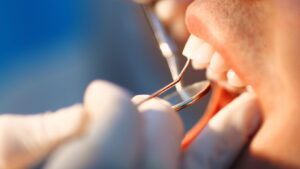 Harga Pasang Gigi Palsu 1 Biji Di Puskesmas
Harga Pasang Gigi Palsu 1 Biji Di Puskesmas
In Indonesia, seeking dental health services, particularly dental prosthetics, incurs varying costs. The Harga Pasang Gigi Palsu 1 Biji Di Puskesmas, or community health centers, offer quite affordable solutions. However, these costs fluctuate, influenced by numerous factors. A single dental prosthetic placement does not bear a rigid price tag.
Factors Influencing the Price
 A multitude of elements come into play when determining the price for a single artificial tooth placement at a puskesmas.
A multitude of elements come into play when determining the price for a single artificial tooth placement at a puskesmas.
- Type of dental prosthetic: Different types of prosthetics, such as crowns, bridges, and dentures, fetch different prices. For example, a ceramic crown attracts a higher price compared to an amalgam one.
- Material of choice: High-end materials drive the price up. Materials like porcelain, gold alloy, or mixed porcelain-metal combinations typically bear heftier tags than plastic or other less durable materials.
- Dentist’s skills and experience: Highly skilled, experienced dental practitioners often charge more for their services.
- Geographical location of the puskesmas: Centers in urban areas might carry higher operating costs and hence, potentially higher prices for dental services.
Price Comparison with Other Locations
 When juxtaposed with other locations providing similar services, the puskesmas tend to offer a more budget-friendly approach. Dental clinics in metropolitan areas, for instance, might charge significantly higher rates, escalating costs by 40-60%. Comparatively, dental hospitals, although typically more expensive than puskesmas, often attract lower charges than private clinics.
When juxtaposed with other locations providing similar services, the puskesmas tend to offer a more budget-friendly approach. Dental clinics in metropolitan areas, for instance, might charge significantly higher rates, escalating costs by 40-60%. Comparatively, dental hospitals, although typically more expensive than puskesmas, often attract lower charges than private clinics.
It’s crucial for individuals seeking dental prosthetics to meticulously compare prices across various establishments, evaluating each against their budget and dental needs before making a decision. Despite being largely affordable, the costs in puskesmas do vary, influenced by several factors as outlined above.
Process of Getting Dental Prosthetics in Puskesmas
The journey for obtaining a Harga Pasang Gigi Palsu 1 Biji Di Puskesmas has three main stages. They entail an initial consultation, prosthetic creation, and fitting.
Initial Consultation and Examination
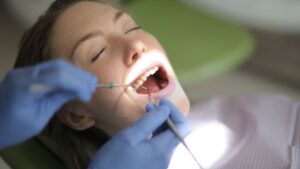 The first step involves a consultation and dental examination. Individuals get assessed by a dentist to identify the need for a dental prosthetic. This step is crucial to determine the patient’s oral health state, the type of prosthetic required, and the materials suitable for the patient.
The first step involves a consultation and dental examination. Individuals get assessed by a dentist to identify the need for a dental prosthetic. This step is crucial to determine the patient’s oral health state, the type of prosthetic required, and the materials suitable for the patient.
For instance, in the case of a missing tooth, the dentist evaluates the gap left behind and the surrounding teeth. He then determines whether they are strong enough to support a bridge or if a dental implant can be considered. Tests such as X-rays might be ordered to get a better understanding of the condition. After a thorough analysis and discussion with the patient, the dentist recommends the best type of prosthetic.
 Creating the Prosthetic
Creating the Prosthetic
Once the assessment is complete and the prosthetic decisions are finalized, the dentist proceeds to create the dental prosthetic. This stage often involves taking accurate impressions of the patient’s teeth. Impressions serve as a model for the prosthetic tooth creation. Different materials like porcelain, metal, or composite resins are used to construct the prosthetic based on quality, aesthetics, and budget preference.
Fitting and Adjusting the Prosthetic
 After the dental prosthetic is ready, the last stage is fitting it into the patient’s mouth. This involves a precise placement of the prosthetic, ensuring it fits correctly and comfortably. The dentist checks the prosthetic’s alignment and adjusts if necessary. Various factors such as speech, chewing function, and comfort level are taken into consideration during the fitting process. After the adjustment, the dentist cements the prosthetic into place. The patient then transitions from fitting to aftercare, focusing on maintaining oral hygiene and regular dental check-ups.
After the dental prosthetic is ready, the last stage is fitting it into the patient’s mouth. This involves a precise placement of the prosthetic, ensuring it fits correctly and comfortably. The dentist checks the prosthetic’s alignment and adjusts if necessary. Various factors such as speech, chewing function, and comfort level are taken into consideration during the fitting process. After the adjustment, the dentist cements the prosthetic into place. The patient then transitions from fitting to aftercare, focusing on maintaining oral hygiene and regular dental check-ups.
Pros and Cons of Getting Dental Prosthetics in Puskesmas
Dental treatment in Puskesmas, Indonesia’s community health centers, presents a unique set of advantages and disadvantages. In this section, we’ll explore the myriad factors contributing to both sides of the scenario.
Advantages of Puskesmas Dental Treatment
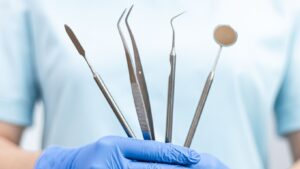 Lower Costs: Puskesmas tend to offer dental treatments, including prosthetics, at rates significantly lower than private practices or urban clinics. For instance, a dental prosthetic that might cost Prosthetics in urban clinics may cost 2 million rupiah, while the same at a Puskesmas can be as low as 500k rupiah.
Lower Costs: Puskesmas tend to offer dental treatments, including prosthetics, at rates significantly lower than private practices or urban clinics. For instance, a dental prosthetic that might cost Prosthetics in urban clinics may cost 2 million rupiah, while the same at a Puskesmas can be as low as 500k rupiah.- Accessibility: Given their community-based nature, Puskesmas often strategize their locations in areas easily accessible to the larger populace, ensuring that dental care is within everyone’s reach.
- Government Support: With backing from the Indonesian government, patients receive assurance of basic standards in the treatment they receive. This means a certain degree of robustness in the care provided, even if it’s not as high-tech as upmarket clinics.
 Limited Resources: Puskesmas may not possess the latest equipment or utilize the most advanced methods. This limitation can constrain the range and quality of dental prosthetic options offered. Consequently, it’s possible that patients may not receive the most ideal solution for their dental issues.
Limited Resources: Puskesmas may not possess the latest equipment or utilize the most advanced methods. This limitation can constrain the range and quality of dental prosthetic options offered. Consequently, it’s possible that patients may not receive the most ideal solution for their dental issues.- Long Waiting Times: Given their high demand due to the affordable pricing and community-based locations, Puskesmas often sees significant patient volumes. As a result, patients may experience long wait times, which may not be ideal for those seeking prompt treatment.
- Staff Limitations: While there are diligent and dedicated professionals in Puskesmas, their number may not meet the high patient demand. With fewer dentists to patient ratio, the amount of attention and personalized care each patient receives could potentially be limited.
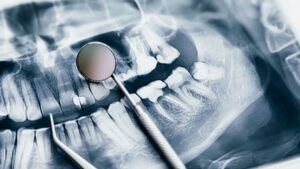 Patient Experiences: Dental Prosthetics in Puskesmas
Patient Experiences: Dental Prosthetics in Puskesmas
This section delves into first-hand accounts of individuals who received Harga Pasang Gigi Palsu 1 Biji Di Puskesmas. They reflect both the challenges and triumphs experienced during the process. Furthermore, it includes input from dental health experts offering analysis on the subject matter.
Personal Stories from Patients
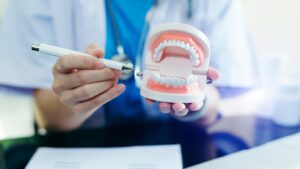 Mrs. Sari’s tale involves her visiting a puskesmas for a dental prosthetic. She cites the cost efficiency, including a rather agreeable sum of IDR 350,000 for the procedure, as the primary reason for her decision. In spite of the prolonged waiting period, the result met her satisfaction.
Mrs. Sari’s tale involves her visiting a puskesmas for a dental prosthetic. She cites the cost efficiency, including a rather agreeable sum of IDR 350,000 for the procedure, as the primary reason for her decision. In spite of the prolonged waiting period, the result met her satisfaction.- Another patient, Mr. Ali, a pensioner, narrates his dilemma of needing a dental prosthetic but falling short on funds. The puskesmas proved to be a financial lifeline providing service at IDR 300,000 compared to IDR 2 million at a private clinic.
- Illustrating the predicament of limited resources, Miss Rina voices her struggle to secure a timely appointment at the puskesmas due to the high demand for dental services. Yet, the accommodating staff made the process smoother, cementing her faith in the community health center.
Expert Opinions and Analysis
 Prof. Dr. Wijaya, a renowned dental health expert, acknowledges the significant role puskesmas play in providing affordable dental care. He emphasizes the need to upgrade resources and introduce an appointment system to manage time constraints better.
Prof. Dr. Wijaya, a renowned dental health expert, acknowledges the significant role puskesmas play in providing affordable dental care. He emphasizes the need to upgrade resources and introduce an appointment system to manage time constraints better.
Additionally, Dr. Suci, a dental practitioner, points out the gap in specialist care available at puskesmas. She advocates for policies encouraging more specialists to offer their services at community health centers, bridging the discrepancy without compromising cost effectiveness.




